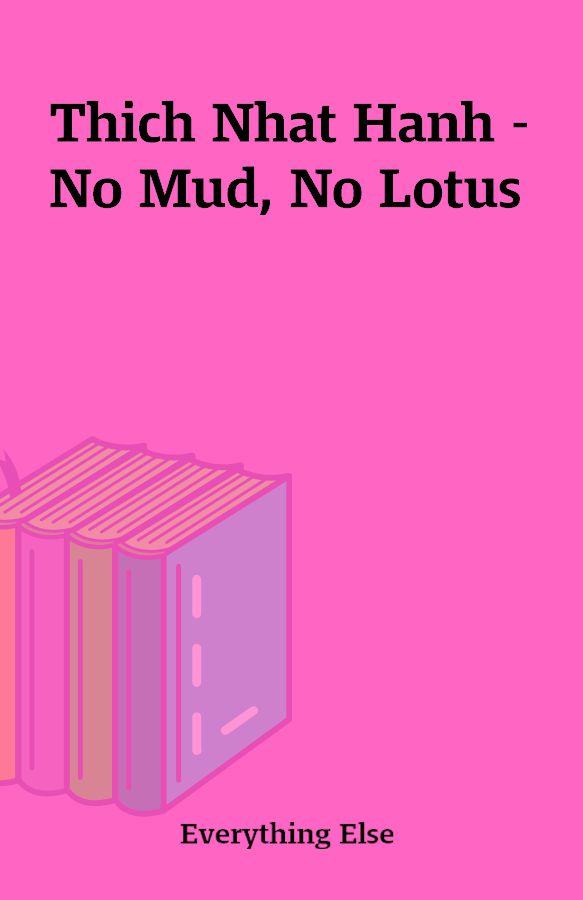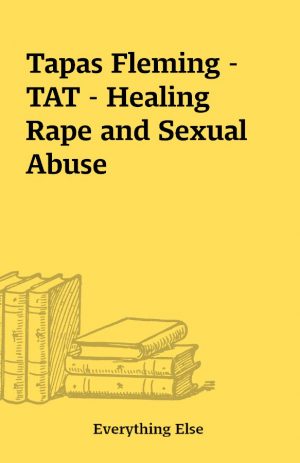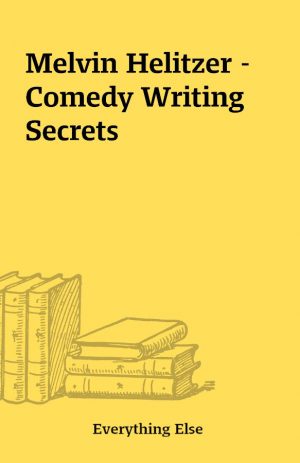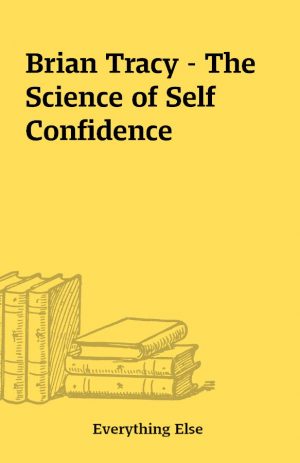Thich Nhat Hanh – No Mud, No Lotus
No Mud, No Lotus_ The Art of Transforming – Thich Nhat Hanh.epub
[1 eBook – 1 Epub]
Description
n this extraordinary book, one of the world’s most renowned Zen Buddhist masters teaches us how to find happiness by getting past suffering. He shows us how the only way to do this is by acknowledging and transforming suffering, not running away from it. He shares with us the practices of stopping, mindful breathing and deep concentration that will enable us to generate the energy of mindfulness within our daily lives; using that energy, we can embrace pain and suffering, calm them down, instantly bringing us a measure of freedom and a clearer mind. Serene and wise, No Mud, No Lotus is an immensely practical guide to overcoming life’s big and little problems.Editorial ReviewsAbout the AuthorThich Nhat Hanh is one of the most revered Zen teachers in the world today. His best-selling books include Happiness and Peace Is Every Step. He lives in Plum Village in southwest France, where he gardens, writes, and teaches the art of mindful living.Excerpt. © Reprinted by permission. All rights reserved.Healing Begins with Conscious BreathingThe process of healing begins when we breathe in. There is no way to healing; healing is the way. When we breathe in mindfully, we bring our mind home to our body and there is a reunification of body and mind. That can happen in just a few seconds.When we bring our mind home to our body, we stop our thinking. There is always a mental discourse going on in our mind, which can carry us away from the here and the now. Thinking can be productive, but most of our thinking is not productive. You may be lost in your thinking. Also your regret and sorrow about the past can stop, as well as your fear, worries, and uncertainty about the future. So just breathing in mindfully brings you a lot of freedom. In just a few seconds you get freedom from the past, from the future, from your thinking and your projects.If you continue to breathe in and out in awareness, you can maintain that state of freedom. If you have to make a decision, it’s much better to make a decision when you are free, rather than to make a decision under the influence of your fear, anger, regret, and worries. Freedom is possible. And freedom is obtained when you begin to breathe in mindfully.It’s difficult for healing to take place when we’re under pressure, tension, and stress in our body and mind. There’s always a kind of energy pushing us to run. Many of us believe that happiness is not possible here and now. Most of us believe that happiness is possible in the future, so we try to run into the future and get some conditions of happiness that we don’t have in the here and the now. According to the teaching and practice offered by the Buddha, we already have enough or more than enough conditions to be happy in the here and the now. If you breathe in and bring your mind home to your body, you’ll be established in the present moment and you’ll recognize the many conditions of happiness that you already have.Releasing Tension in the BodyThe first domain of mindfulness is the breath and the body. Being aware of our in-breath and out-breath is a very simple exercise, but the effect is very great. It can stop our thinking, worries, and fears, and it brings us a lot of freedom. When we focus our attention on our in-breath and out-breath, not only can we enjoy our breathing, but we are established in the here and the now, we can be in touch with many wonders of life within and around us, and the process of healing can start. Next we become aware of the whole body and release the tension in the body. While taking care of the body we produce freedom and joy, because body is linked to mind.Not Running Away from PainMost of us don’t want to be with our pain. We’re afraid of being overwhelmed by it, so we stry to run away from our pain. There’s loneliness, fear, anger, and despair in us so we don’t feel it’s pleasant to go home to ourselves and encounter these energies. Most of us try to cover up by consuming. We look for something to eat or we turn on the television. Even if the program isn’t interesting we don’t have the courage to turn it off because we don’t want to go back and encounter the pain inside. The marketplace provides us with many items to help us to cover the suffering inside.According to this teaching and practice, we should try to go home and take care of the pain. There is a way to go home without fear of being overwhelmed by the pain and that is by generating the energy of mindfulness. With the energy of mindfulness you go home to the pain and embrace it, the way a mother holds her baby when it suffers. So the mother represents the energy of mindfulness, and the baby our painful feeling. If we are a beginner in the practice, we may borrow that energy from our brothers and sisters in the practice. “Dear Sangha, here is my pain, here is my sorrow. Please help embrace it for me.” Everyone will be breathing in and out and supporting you in recognizing and embracing the pain inside. That’s why practicing with a Sangha is much easier. The sangha can generate a powerful collective energy of mindfulness that can help you to recognize and embrace your pain. Later on you can do it for yourself when you have got some relief.Practicing mindful walking, mindful breathing, you generate the energy of mindfulness. With that energy you recognize the painful feeling in you and you embrace it tenderly. You lullaby and calm the painful feeling.Handling Strong EmotionsMost young people haven’t learned how to handle a strong emotion, like anger, fear, or despair. So they believe that the only way to end the suffering is to kill themselves or kill someone else. We as parents or teachers can master the practice of handling strong emotions so we can transmit it to the young people.When a strong emotion comes, we should stop whatever we’re doing and take care of it. The practice is simple. Lie down, you put your hand on your belly, and begin to breathe. You may also do this while sitting in an upright position. Stop the thinking. Don’t allow your awareness to be on the level of the mind. Bring your mind down to the level of your abdomen. When you look at a tree in a storm, if you focus your attention on the top of the tree, it seems the tree is so vulnerable and fragile and could be broken at any time. But when you direct your attention down to the trunk of the tree, you see that the tree is deeply rooted in the soil and can withstand the storm. Your belly is the trunk of the tree and your mind is the top of the tree. In the time of a strong emotion we have to bring our mind down to our trunk, our abdomen, and focus all our attention on the rise and fall of the abdomen. Breathing in, notice the rising of your abdomen. Breathing out, notice the falling of your abdomen. Breathe deeply, and focus your attention only on your in-breath and out-breath. If you’re aware of anything, it’s that an emotion is just an emotion and that you’re much much more than one emotion. You are body, feelings, perceptions, mental formations, and consciousness. The territory of your being is large. One emotion is nothing. An emotion comes, stays for a while, and then it goes away. Tell the young person: “Why should you die just because of one emotion? You can learn now how to handle a strong emotion. Then later on when a strong emotion comes again, you’ll be able to handle it.”We shouldn’t wait until the strong emotion comes to begin learning. It may be too late. The emotion will carry you away. So we have to begin the practice today, the practice of deep breathing, stopping our thinking, and just focusing our attention on the rising and falling of our abdomen. As we continue the breathing, the emotion will not be able to push us to do something destructive. When you survive the emotion, you will have confidence that you can handle it the next time. Even if your child is only five or seven, he or she can have a strong emotion. Take his hand and say, “Darling, let’s breathe together. Breathing in, you know your belly is rising,” and you create something like a guided meditation and the child will follow you. You can channel to the child your energy of mindfulness. Teachers can also do this in school.We are much more than one emotion. Emotion is something impermanent. It comes and goes. If during the time of the emotion, you have that insight, it will save you. If you can remind the young person of that insight, you save his or her life.File Size: 324 KBPrint Length: 117 pagesPublisher: Aleph Book Company (October 1, 2017)http://www.amazon.com/NO-MUD-LOTUS-Hanh-ebook/dp/B075M7775Q/…
You must be logged in to post a review.






Reviews
There are no reviews yet.